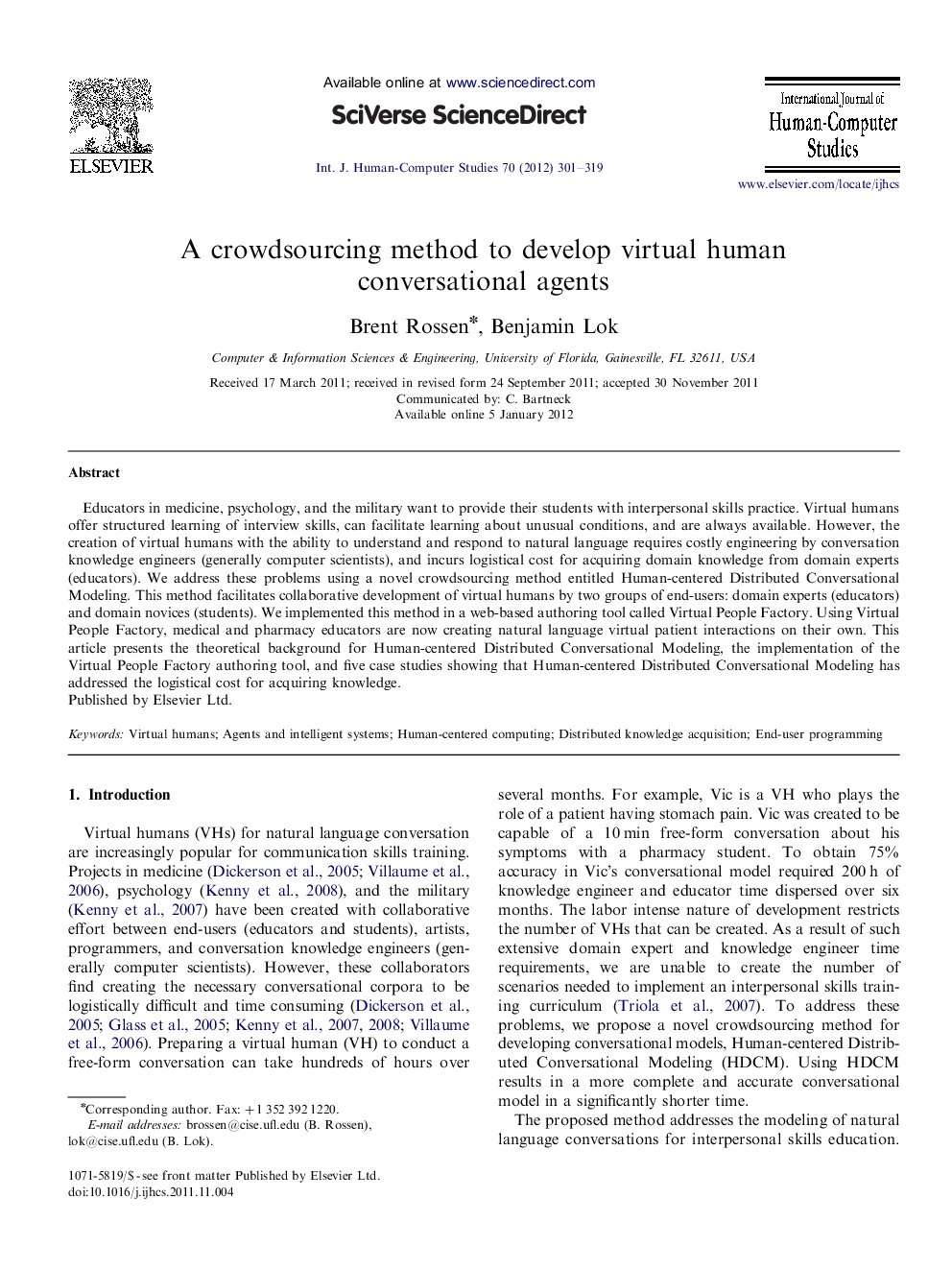| Article ID | Journal | Published Year | Pages | File Type |
|---|---|---|---|---|
| 401204 | International Journal of Human-Computer Studies | 2012 | 19 Pages |
Educators in medicine, psychology, and the military want to provide their students with interpersonal skills practice. Virtual humans offer structured learning of interview skills, can facilitate learning about unusual conditions, and are always available. However, the creation of virtual humans with the ability to understand and respond to natural language requires costly engineering by conversation knowledge engineers (generally computer scientists), and incurs logistical cost for acquiring domain knowledge from domain experts (educators). We address these problems using a novel crowdsourcing method entitled Human-centered Distributed Conversational Modeling. This method facilitates collaborative development of virtual humans by two groups of end-users: domain experts (educators) and domain novices (students). We implemented this method in a web-based authoring tool called Virtual People Factory. Using Virtual People Factory, medical and pharmacy educators are now creating natural language virtual patient interactions on their own. This article presents the theoretical background for Human-centered Distributed Conversational Modeling, the implementation of the Virtual People Factory authoring tool, and five case studies showing that Human-centered Distributed Conversational Modeling has addressed the logistical cost for acquiring knowledge.
► Automated virtual humans offer structured learning of interview skills. ► Automation requires developing a conversational model. ► We present a novel approach to efficiently develop conversational models. ► We detail Virtual People Factory, a system that implements our modeling approach. ► 5 studies demonstrate the efficacy of this approach for generating virtual patients.
